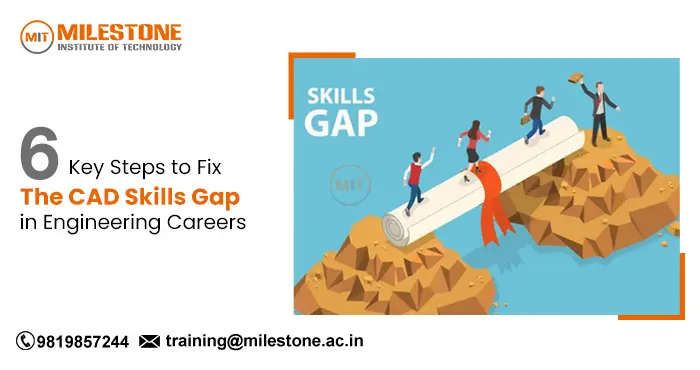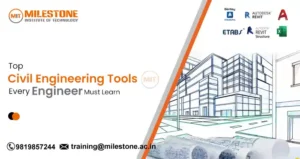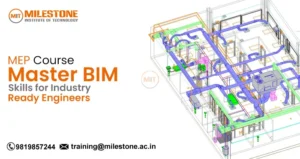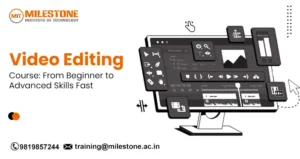
The CAD skills gap amongst engineers is a major concern of the recruits. Even those who have degrees are struggling to find jobs in their core fields. The reason? There is a growing gap between what students are learning and what the industry needs in terms of learned graduates.
As per the NASSCOM 2024 reports, it is stated that there are only about 125 % of engineers were industry ready with required CAD skill set and 85% engineering graduates in India cannot employable for mechanical designing core activities. One important thing, the engineering industry wants more than muscle memory butts in seats that understand theory, it needs experience with tools and workflows used on real projects.
In this blog, we will uncover why this CAD skills gap exist, what employers are really looking for and 6 simple steps to fix the CAD Skills Gap and create a successful engineering career.
Understanding the CAD Skills Gap
The CAD skills gap Based on the difference between what engineering graduates know and what industry needs. Colleges emphasize theory much more than companies need engineers to deliver results. While those were days when recruiters picked any graduate over people trained in some specialized school of training.
Why? The reason: Those candidates comes with real-world experience, where skill in using software and a portfolio that shows you they can deliver design projects while working in industries.
If you are an engineering student or recent graduate, this gap might seem intimidating but it’s also a chance. If you get the right skills in order to stand out, your career will fast track.
What Is The Reason For CAD Skills Gap?
The current CAD skills gap can be attributed to things such as:- Theory-Based Curriculum – The main curriculum of most engineering studies will focus more on theoretical knowledge and less in actual application.
- Limited Software Training – Experience with software such as AutoCAD, SolidWorks, and Revit are usually elementary at best leaving students unable to keep up.
- Unavailability of Project Experience – Practical experience with real projects is something a student misses out on because they have nothing to do with during the academic year.
- Shifted Industry Requirements – Employers are too inclined to expect cross-disciplinary ability (knowledge in several CAD systems and familiarization with work processes throughout the world).
What Employers Want in Engineers?
Before we get to the steps for closing the CAD skills gap we need to understand the employer’s expectations of engineers in the current job market:For Civil Engineers:
- Proficiency in AutoCAD (not basic drafting)
- Experience with Civil 3D (common for infrastructure)
- Understanding of BIM modeling (Revit)
For Mechanical Engineers:
- Familiar with SolidWorks or Inventor for 3D modeling
- Ability to design assemblies (complex components, and design for manufacturing)
- Ability to develop production drawings that can be used for manufacturing
- Understanding how the real industry works
For all Engineers:
- A strong project portfolio related to real industry experiences.
- Familiar with standards and practices related to the industry
- Ability and interest to collaborate and work with other team members and cross functional team
- Problem solving proficiency using advanced CAD software
6 Essential Steps to Solve the CAD Skills Gap
Here are 6 essential steps to solve the CAD Skills Gap and prepare yourself for a job:-
Become proficient with industry-standard CAD software
-
Get experience with actual projects
-
Understand industry standards
-
Understand Advanced processes
-
Build An Amazing Portfolio
-
Participate In Professional Development
The Milestone Advantage
At Milestone Institute of Technology, we don’t just teach software – we prepare you for your industry. Here is how:- Learn from experienced professionals. Our instructors have decades of industry experience.
- Work on live projects with leading industry partners.
- Build a unique portfolio that will get hired managers attention.
- 95% placement rate – it speaks for itself.
Conclusion
There is a skills gap in CAD knowledge and expectations and many engineering graduates have entered into this challenge, but with a focus on developing industry ready skills, you will have a better opportunity to turn this challenge into an advantage.
Working towards being competent using the tools and getting hands on experience and building a good portfolio and being aware of the standards will help, to close the CAD skills gap. The sooner you close the CAD skills gap, the sooner you will position yourself for success in the engineering job market.
Frequently Asked Questions
How to develop CAD skills?
- Develop your CAD skills by working on real-world projects, checking out advanced tutorials, and staying on top of the latest tools and trends in your industry.
How do I develop my engineering skills?
- You can develop your engineering skill by to practice, practice and practice and learning new things also concern continuous learnings.
What skills do I need to use CAD?
- To use CAD you need basic computer skills, knowledge of design principles and processes, attention to detail, and the capacity to learn unique software tools for CAD.
Is CAD necessary for engineering?
- Yes, CAD (Computer-Aided Design) is necessary for engineering as it has become an important tool in almost all areas of engineering, mechanical, civil, electrical, aerospace and even product design.



